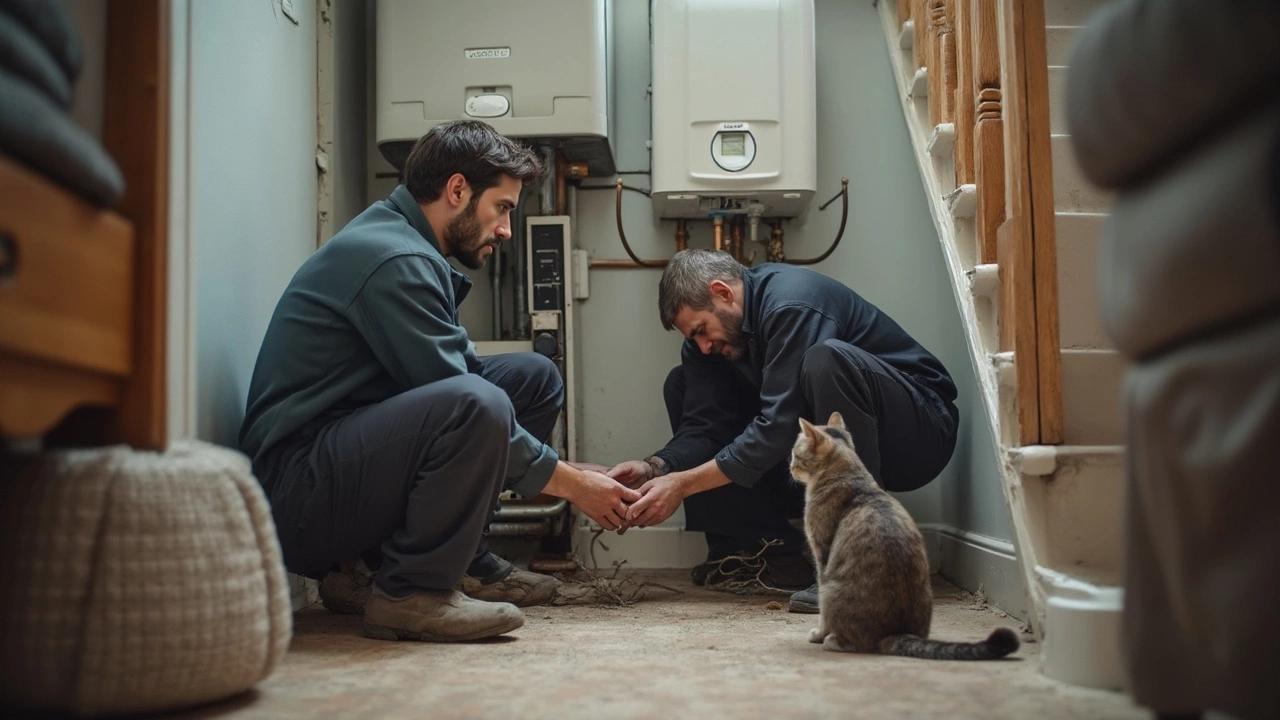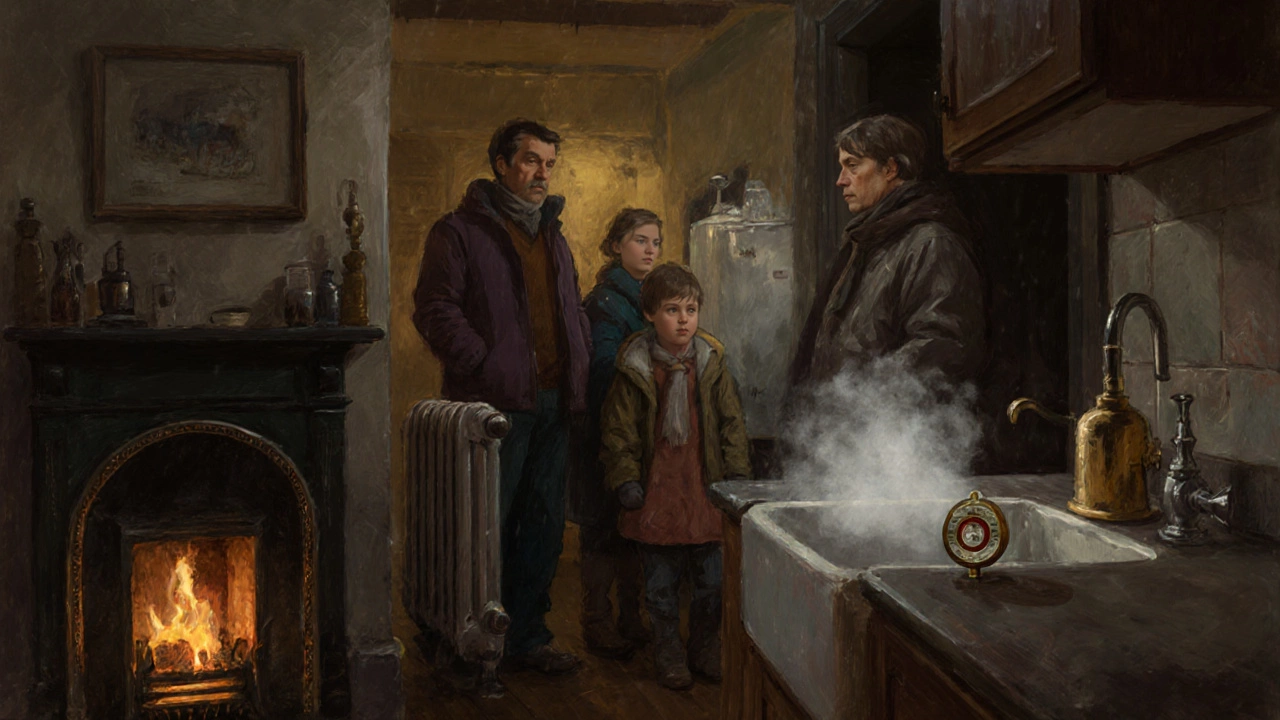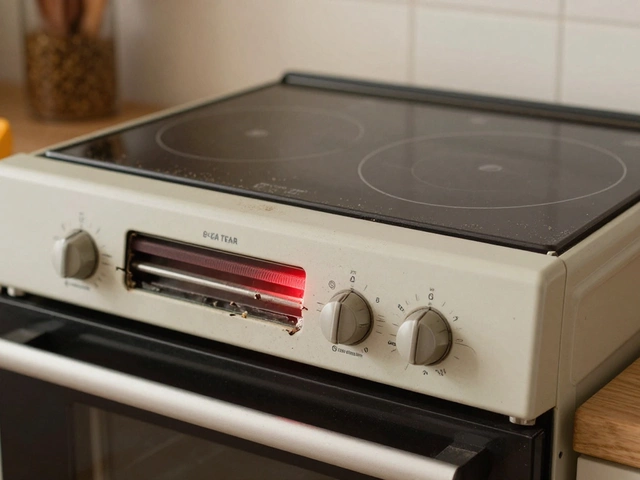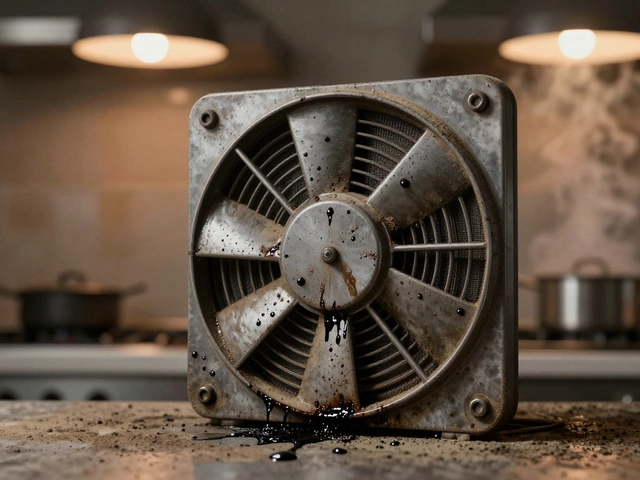Boiler replacement sounds like a nightmare if you picture dust clouds and muddy boots tracking across your carpet. You probably wonder if you’ll need to deep-clean the house for a week afterwards. The reality? It’s not always as chaotic as people imagine, especially if you know what to expect and how to prepare.
Most installers know how much the mess factor matters to homeowners. These days, the best professionals show up with dust sheets, shoe covers, and the right gear to keep your floors and furniture clean. Will a little bit of grit sneak out? Sometimes, yes. Pipes might need cutting, and old units can leave behind some soot, but huge disasters are rare if your installer pays attention.
If you’re worried about paint peeling off walls or your cat coming out black from soot, you might be a bit too anxious. Still, there are simple, practical steps you can take to make life easier. Clear a path to your boiler, stash away valuables, and if you’re a neat freak, maybe roll up the rug in advance. It sounds fussy, but you’ll thank yourself later.
- Why Do Boilers Get Replaced?
- The Truth About the Mess
- What Installers Actually Do
- How to Prepare Your Home
- Pro Tips to Minimize the Mess
- When It’s All Over: What to Check
Why Do Boilers Get Replaced?
People don’t plan on swapping out a boiler just for fun—it’s usually because something big’s gone wrong or it’s time for a serious upgrade. The most common reasons are break-downs, old age, expensive running costs, or safety problems. Let’s break this down so you know what actually pushes someone to call in the pros for a full-on boiler replacement.
- Age: Most boilers have a working life of about 10 to 15 years. After that, they start acting up more often and efficiency drops. An older boiler isn’t just unreliable—it can also cost more to run each month.
- Breakdowns: If you’re calling a repair guy every winter, you’re not alone. When breakdowns become a regular pain, it makes more sense to replace the boiler than keep patching it up.
- Efficiency: Modern boilers are up to 30% more efficient than those from the early 2000s. That can mean big savings on your heating bill.
- Safety: Old or broken boilers can leak carbon monoxide (which is deadly) or develop other hazards. No one wants to take that risk at home.
- Noise: Is your boiler making weird noises or rattling like a washing machine full of rocks? Often, that’s a sign things are wearing out inside.
It’s not just talk—here’s some real data about when and why UK homes get their boilers replaced:
| Reason for Replacement | % of Replacements (UK, 2024) |
|---|---|
| End of Life (Age) | 43% |
| Efficiency Upgrade | 29% |
| Frequent Breakdowns | 18% |
| Safety Concerns | 7% |
| Other | 3% |
So, if your energy bills are up, your house isn’t warming like it used to, or the boiler’s acting up every time you need a hot shower, it’s not just you—these are clear signs it’s time for change. Replacing the boiler is often about saving hassle, cash, and keeping your home safe.
The Truth About the Mess
If you’re eyeing a boiler replacement, you’re probably trying to figure out how bad the mess will get. Here’s the straight answer: yes, there’s mess involved, but it’s usually manageable. Most of the dust and debris comes from pulling out the old boiler, especially if the unit’s been sitting there for years. Expect a bit of dirt around the base and maybe scuffed paint on the wall where the boiler was attached.
Old pipes can leave behind rusty flakes or grime when they’re disconnected. If your installer needs to do extra work—like moving pipes, cutting old copper, or updating flues—there may be more dust and sometimes tiny bits of metal or insulation. If your boiler’s in a tight closet or kitchen cupboard, sometimes boards or panels get pulled off, leaving a few chips behind.
Here’s what’s not so common: major chaos. You’re not going to find your whole house coated in soot. Most experienced installers lay down dust sheets or plastic tarps in the work area. Good companies will even use small vacuums to collect mess as they go. Tools like mini vacs, dustpans, and wet wipes are standard these days.
If you’re worried about water damage, it’s rare but possible; installers have to drain the system before removing old parts, which usually means some water in a bucket—sometimes a spill if someone’s not careful. If you stay out of the work zone, keep pets away, and pick a team with good reviews, you can dodge most headaches.
After the job, there’s usually a basic cleanup included. Still, check with your installer how deep they’ll go—some will leave things spotless, others might wipe around quickly. You might need a quick vacuum or mop once they leave, especially if you’re picky about dust. But unless your home already had a bad mess under the boiler, replacing it shouldn’t turn your place upside down.
What Installers Actually Do
Wondering what’s really going on when the boiler crew shows up? Here’s the inside scoop. The first thing they handle is shutting down your old system. This means turning off the gas and water supply, and draining what’s left in the boiler and pipes. Any remaining water has to go somewhere—usually a bucket—so a bit of splashing is normal, but they clean it up afterward.
Next comes the disconnect. The installers remove old pipes, take out the boiler unit, and sometimes lift floorboards if your pipes are tucked below. If there’s an old flue (that’s the vent for exhaust gases), they’ll detach and safely cap it off. This part can be slightly noisy and, depending on your setup, might involve a bit of drilling or sawing.
They roll out dust sheets and covers before work begins to keep things as tidy as possible. Good installers always bring a vacuum or dustpan to handle leftover grit or debris. You don’t want sharp bits lingering around, especially if you’ve got pets or little ones running about.
Once the old unit is out, it’s time to fit the new boiler. They’ll mount it on the wall, link up the pipes, and make absolutely sure there are no leaks. Wiring comes next. Most boiler replacement jobs include upgrading the thermostat or hooking up a new smart controller. It might sound technical, but for the crew, it’s all pretty standard.
When everything’s connected, there’s testing: they fire up the system, bleed radiators if needed, and check every joint for drips. They’ll run your heating and hot water, making sure the heat actually turns up and nothing’s leaking under pressure.
- They’ll show you how to use any new controls before they leave.
- Any old boiler or scrap gets packed up and carted away unless you want to keep it (most folks don’t).
- Proper crews leave the work area cleaner than they found it, even wiping down dusty skirting boards if needed.
If something unexpected pops up—like old wiring, dodgy pipework, or asbestos in ancient flues—installers should tell you straight away so you’re not left wondering what’s going on.

How to Prepare Your Home
No one wants the hassle of a big clean-up after a boiler replacement. Good prep makes a massive difference and can shave off hours of bending, sweeping, and scrubbing after the install team leaves. It also saves your stuff from dust and dirt that creeps in even with careful workers.
- Clear a Path: Move anything blocking the route between your main door and the boiler. Think shoes, small tables, coats, and especially anything breakable. Installers haul heavy, bulky equipment, and you don't want your favorite vase in the way.
- Protect Floors: Lay down old sheets or plastic where the crew will walk if you want extra peace of mind, even though most pros bring their own dust sheets. Carpets are dust magnets—rolling them away or taping down runners means fewer headaches later.
- Empty the Space: The area around your boiler needs to be clear—tools, cleaning supplies, boxes, or anything in the cupboard has to go. A good rule is to give at least four feet of wiggle room around the unit.
- Pets & Kids: Keep them well out of the work zone. Cats and small dogs especially love sneaking into interesting-smelling spaces and can get hurt or covered in grime.
- Ask Before: Check with your installer if there are any special instructions—sometimes, you might have to turn off your gas supply or clear space for new pipework ahead of time.
Here's a quick breakdown of what mess gets left behind with and without good prep. More prep usually means less cleaning time for you:
| Preparation Level | Average Clean-Up Time | Common Mess Left |
|---|---|---|
| Everything cleared, dust sheets ready | 20-30 mins | Minor dust, packaging |
| Some areas cleared, carpets exposed | 45-60 mins | Dust on carpets, footprints |
| No prep at all | 60+ mins | Heavy dust, debris, stains |
It really comes down to personal effort. A ten-minute tidy saves a day of regret. If you’ve done basic prep, your house—and your nerves—will be in much better shape after the job’s done.
Pro Tips to Minimize the Mess
No one wants clouds of dust wafting around or dirty tools parked on the hallway floor after a boiler replacement. You don’t have to just cross your fingers and hope for the best, though. A bit of prep and some smart questions for your installers can go a long way.
Here are a few tips that genuinely make a difference:
- Cover Up Early: Lay down dust sheets in hallways and main walkways before installers arrive. Professional teams usually bring their own, but having a few spares never hurts—especially if you’re picky about your floors.
- Clear Out the Area: Move anything valuable, fragile, or fluffy out of the boiler room (yep, that means pet beds, shoes, or random laundry piles). Tight spaces create more bumps and accidents.
- Seal the Doors: If your boiler’s next to living spaces or bedrooms, close doors and, if possible, tape up the gaps at the bottom with masking tape. This blocks most dust from drifting in.
- Check for Outdoor Work: Sometimes new boilers mean drilling through walls for a new flue. If that’s happening, ask the team to shield gardens or patios with tarps or old sheets.
- Go for “Power Flush”: If they’re suggesting a full system clean (power flush), double check they'll protect the area. Power flushing makes water flow backward to clear out gunk but can sometimes backfire if not done properly.
- Tell Them What You Care About: Got brand new carpet? Tell them! Most reputable engineers want you happy, not stressed.
It’s not just about what you do, but who you hire. According to a 2024 survey by Which?, households that hired Gas Safe registered engineers reported 63% fewer cleaning complaints after boiler work compared to those who hired unregistered installers.
| Preparation Tip | Impact on Mess |
|---|---|
| Dust-proofing Sheets | Reduces visible dust by up to 70% |
| Clearing Work Area | Cuts down on accidental damage and debris spreading |
| Sealing Off Adjoining Rooms | Keeps 80% of the dust contained |
| Hiring Registered Installers | Less post-job clean-up required |
One last tip: check if the installer offers a final tidy-up service. The good ones always do. A quick vacuum and wipe-down at the end means you’re not left holding the mop once they drive off. That’s a win every time.
When It’s All Over: What to Check
So, the crew packs up, shuts the door behind them, and your new boiler sits there looking shiny and promising. But before you get too comfy, there are a few things you should always double-check after any boiler replacement.
- Hot water and heating: Turn on a tap and crank your thermostat. Does your hot water come through strong? Does every radiator heat up, not just the one nearest the boiler? If not, let your installer know. Sometimes new systems need a final tweak to get everything flowing evenly.
- Leaks: Run your hand along the base of the boiler and check any joints or pipework you can see. Even a tiny drip can be a sign that something’s not right. Most pros do a last-minute leak check, but there’s no harm giving it a quick look yourself.
- Pipe pressure: Every boiler has a pressure gauge—usually an easy-to-read dial. Your manual will tell you the ideal range (it’s often between 1 and 2 bar when cold). Too low or too high? That’s a red flag—ask your engineer to sort it before they head off.
- Tidy job: Walk through the space. Any mess left behind is just lazy. The install area should look as good as—or better than—it did before they started. Bags of rubble, lingering dust, or old parts don’t belong in your home.
- Paperwork and warranty: You should get a handover pack—this usually includes a warranty, install certificate, and service info. If you don’t get these, chase it up, since these documents make your life much easier if something goes wrong down the road.
If you tick off all these points and something feels off a day or two later—maybe a weird noise or a cold patch—get back in touch. Reliable installers usually offer a call-back if minor issues pop up right after fitting. Don’t be shy about asking. At the end of the day, it’s your home, your heating, and your comfort on the line.





